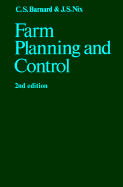Book contents
- Frontmatter
- Contents
- Notice to readers
- Preface to the first edition
- Preface to the second edition
- Selected metric conversion factors
- Part I The organisation of resources
- Part II The organisation of enterprises
- 6 An introduction to enterprise organisation
- 7 Livestock yield and fixed costs
- 8 Yield, variable costs and optimal feed conversion
- 9 The selection of feedstuffs
- 10 The influence of season on livestock production
- 11 The provision of replacements
- 12 Crops and cropping
- Part III The combination of enterprises
- Part IV The control of resources and enterprises
- Selected further reading
- Index
10 - The influence of season on livestock production
Published online by Cambridge University Press: 01 June 2011
- Frontmatter
- Contents
- Notice to readers
- Preface to the first edition
- Preface to the second edition
- Selected metric conversion factors
- Part I The organisation of resources
- Part II The organisation of enterprises
- 6 An introduction to enterprise organisation
- 7 Livestock yield and fixed costs
- 8 Yield, variable costs and optimal feed conversion
- 9 The selection of feedstuffs
- 10 The influence of season on livestock production
- 11 The provision of replacements
- 12 Crops and cropping
- Part III The combination of enterprises
- Part IV The control of resources and enterprises
- Selected further reading
- Index
Summary
There is commonly some degree of flexibility in the time of year when the livestock producer initiates production and sells the ensuing output. It is most apparent with temporary livestock, of which the semi-intensive production of beef is one example. Calves may be purchased in the autumn and sold fat eighteen months later in spring or, conversely, they may be purchased in spring and sold eighteen months later in autumn. Or, in either case, the process may be prolonged and the animals sold, for instance, at twenty-one rather than eighteen months. Another example is the traditional fattening of beef stores, which may commence in spring with the animals sold fat off grass in autumn, or commence in autumn with the animals yarded and sold fat in spring.
The position is much the same for those permanent livestock whose output consists of young animals, such as the ewe flock or the beef or pig breeding herds. For example, the ewe flock may be lambed down early in January with lambs sold fat from April onwards, or lambing may be later in March with sales commencing towards the end of June. Again, with lowland single-suckled beef herds, calving may range from late autumn to spring, with the sale of store beasts falling mainly in autumn in each case.
- Type
- Chapter
- Information
- Farm Planning and Control , pp. 226 - 242Publisher: Cambridge University PressPrint publication year: 1980



